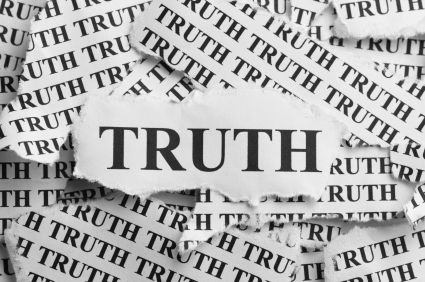- Take a moment to follow up on the last discussion with the investigator. Did they read the material? Did they pray about it? If they prayed and did not receive a witness that the correlated story is false, let them know that, if they pray with real intent, God will let them know. Resolve any concerns.
We believe in truth and honor the truth. We believe that even if it isn’t always possible to know the whole truth, we should attempt to get as close to the truth about situations as possible.
Truth comes in many forms. There is Historical Truth, there is Scientific Truth, and there is Personal Truth.

Picard held truth in high regard and wanted Wesley to do the same
Historical truth is found through pouring over documents, applying logic to situations, and piecing together clues. It is a lot like being a detective. When we are able to piece enough truth together, we have a guideline to live our life by. Nevertheless, we should always be willing to abandon anything we thought was true if more information presents itself.
- Tell the following story to relate historical truth, or share your own story.
In the 1800s, there was a question about this map[1].

It was said to be written by Joseph Smith himself. For years, church members used it as proof against the reorganized church to show that Joseph had always intended the saints to go west.
But then the Kinderhook plates were discovered to be false. On this map, the plates can be seen. Soon, those opposed to the church used the map to prove the church was false.
Later, church scholars discovered that the word “Arizona” is on the map. The name “Arizona” was not created until 1860, proving the map is a forgery.
At each point in the process, church members and nonmembers had to give up what they thought was historical fact for new information.
- Bare your testimony of why it is important to give up facts that are disproved.
Scientific Truth is imperfect, everyone admits that. This should not imply that we can totally disregard scientific truth. Science helps us, via discovering facts and truth, to enjoy the world around us. From cell phones and airplanes, to dog breeding and medical equipment, our lives are improved daily by science.
Science works by a particular method. One observes some condition. Then, one creates a hypothesis (that is, a guess) about why that condition exists the way it does. One then tests the hypothesis and records the results. Finally, one accepts or rejects the guess. Another important step is to have the results peer reviewed. Peer review means other qualified individuals look over the conclusion, perhaps running their own experiments. The peer review step is very, very important to make sure that wrong conclusions are not mistaken as fact.
Whenever there is a question about a scientific conclusion, other branches of science can help to support or reject a conclusion.
For example:
For many years, scientists have said that individuals in North America and Polynesia came from the far east. Many branches of science have looked into this. Pottery, technology items (Such as metal working and arrowheads, and dietary patterns all agree that North American inhabitence came from the Far East.
But many people still rejected this scientific truth. Then one day, a bishop named Simon Southerton decided to prove the Book of Mormon’s claim that people came on boats from the Middle East by using DNA research.
After running many experiments and having his results peer reviewed, he concluded that the DNA science agreed with the previous scientific facts showing that the Native Americans came from the Far East.
This new information was so solid that the church changed the introduction to the Book of Mormon from “principle ancestors” to “among the ancestors” a few months after Mr. Southerton’s scientific research was confirmed.
- The investigator is probably pretty shaken by this. Try to calm their feelings while at the same time not going back on the true claims.
- Ask your investigator(s) how he/she/they can know if DNA research claims are true.
- Further reading on DNA research on Native Americans:
http://www.sciencedaily.com/releases/2009/04/090428223836.htm[2]
http://web.williams.edu/go/native/tallbear_bolnick%20_dna.pdf[3]
http://www.history.com/news/2012/01/26/native-americans-hailed-from-siberian-highlands-dna-reveals/[4]
http://www.psc.edu/science/Merri/merri.html[5]
Personal Truth

Truth. IT matters.
We’ve talked about some things that can be very difficult for some people to understand. For others it comes very natural. As we stated, truth is important to us.
Personal truth means being honest with yourself. It can sometimes be simple for us to excuse our own beliefs as not needing the scrutiny that we apply to the beliefs of others. But if we are to truly know truth, it is important that we test our own beliefs and make sure they withstand inspection.
To do this, we study logical fallacies, have our ideas and theories peer reviewed, and try to verify all of our beliefs.
It is a lifetime process of giving up things, sometimes things that are very dear to us, in exchange for more true information. This process can be hard, but is very rewarding.
We invite you to ponder the things we have discussed today and review the science behind them. We invite you to pray about these things as well, and want you to know that, more than any agenda, we want to come to know the truth–historical, scientific and personal. If you have questions about anything we’ve talked about today, we invite you to ask us any questions or challenge anything presented as we enjoy finding new truth.
- Invite your investigator to listen to this podcast, if you feel like it.
- CHALLENGE: if you feel your investigator is ready, challenge your investigator to resign from the church.
- Bare your testimony of the importance of truth.
